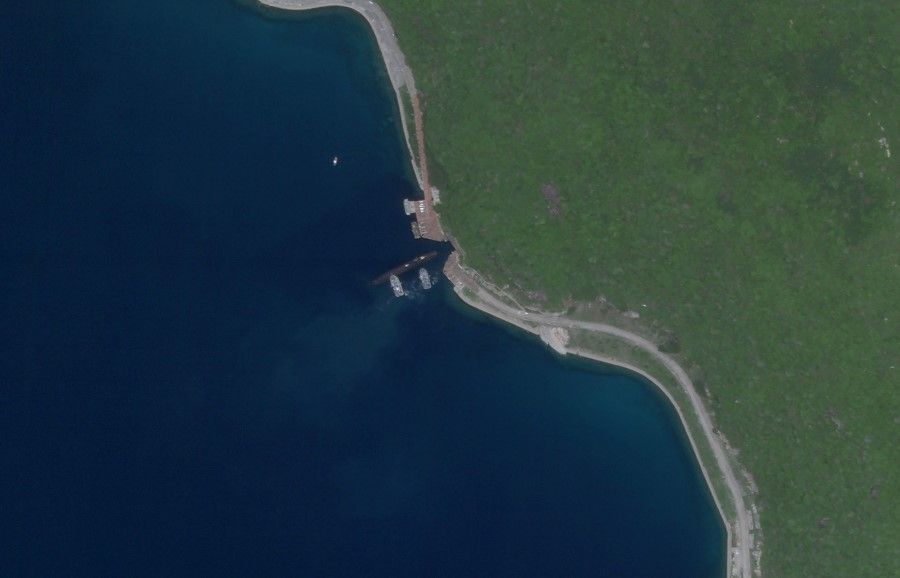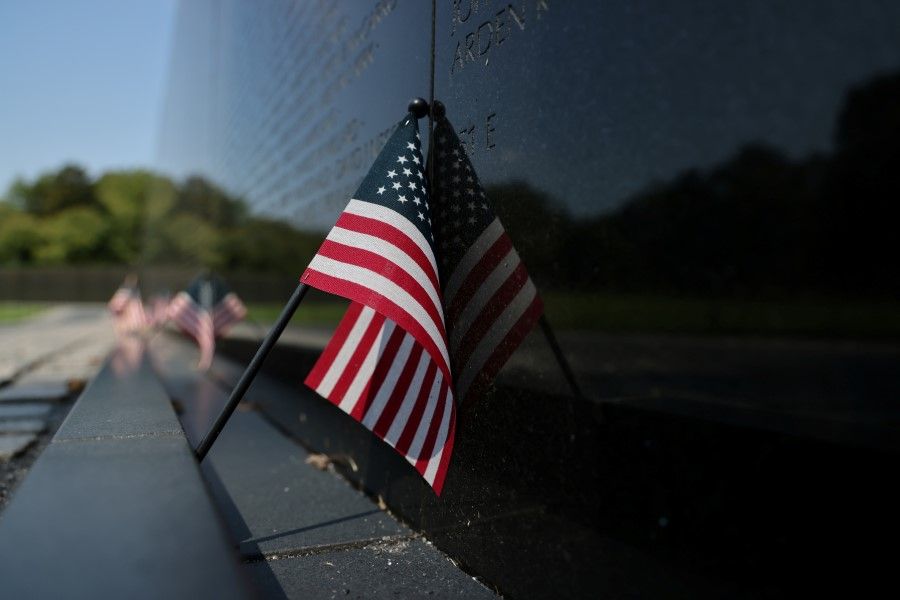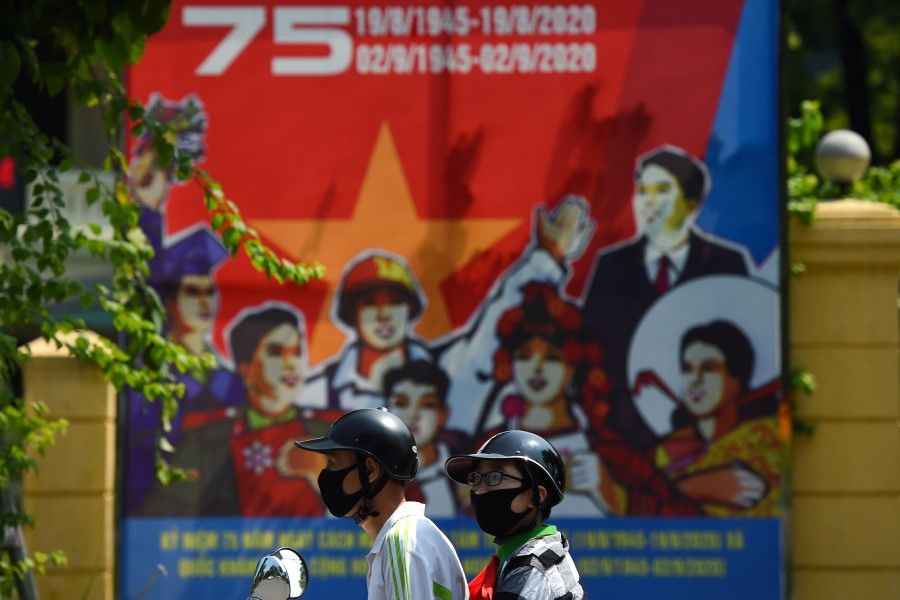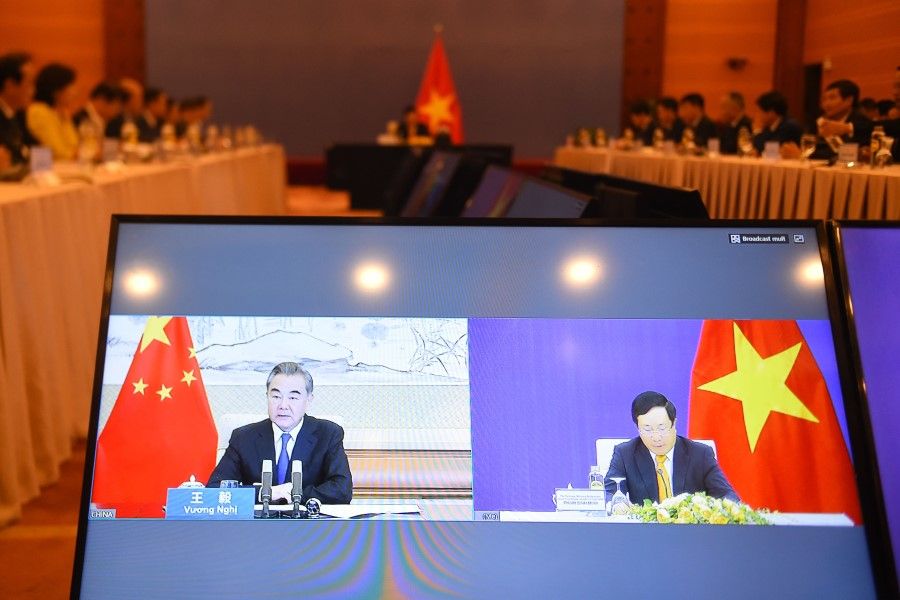Facing frenemy China, Vietnam shall edge closer to America

In April 2020, China's sinking of a Vietnamese fishing vessel in the Paracel Islands elicited another wave of hostility toward perceived Chinese regional hegemony. Vietnam quickly lodged an official protest with China for its provocative behaviour in the disputed waters. On 18 April, China announced that it had established two administrative districts to separately manage the disputed Paracel and Spratly Islands.
Amid the global Covid-19 pandemic, China's aggressive posture triggered a strong response from Vietnam accusing China of violating its sovereignty and threatening regional stability. In the words of Vietnam's foreign ministry spokeswoman Le Thi Thu Hang: "Vietnam demands that China respects Vietnam's sovereignty, abolish its wrongful decisions, and refrain from conducting similar actions."
On 9 April 2020, the US Department of Defense singled out China for taking advantage of the pandemic to exert its power and maritime claims in the South China Sea (SCS), and released a statement, saying: "The United States will continue to support efforts by our allies and partners to ensure freedom of navigation and economic opportunity throughout the entire Indo-Pacific".
On 23 July, US Secretary of State Mike Pompeo criticised the Chinese Communist Party for being "increasingly authoritarian at home, and more aggressive in its hostility to freedom everywhere else" and called for "a new grouping of like-minded nations, a new alliance of democracies" against Beijing.
Regarding the painful wartime memories, America is forgiven while China is considered a frenemy - with shared interests, but deep mutual distrust.
In theory, Hanoi does not have to choose between Beijing, a significant trading partner, and Washington, a powerful friend. In the age of Donald Trump, however, that may not be possible, since the US considers Vietnam a friend and China a foe. President Trump's 2017 National Security Strategy named China as America's prime threat, calling China a "strategic competitor" while identifying Vietnam as a "growing security and economic partner" and a potential "cooperative maritime partner". A shared aversion to perceived Chinese ambition in Southeast Asia has served as a stimulant in the vibrant Vietnam-US relationship.

The dilemma of Vietnam's strategy
It would be worthwhile to recount Vietnam's view of its former adversaries - France, the US, South Korea, Australia, and China - which have all been labelled as "foreign invaders" in Vietnamese history textbooks. Despite this unpleasant past, France is loved, Japan is respected, while the roles of South Korea and Australia have gradually been forgotten. With respect to the US, Vietnam has advocated setting aside the past and looking towards the future, and cooperating on mutual development. Regarding the painful wartime memories, America is forgiven while China is considered a frenemy - with shared interests, but deep mutual distrust.
Earlier in its history, Vietnam was under Chinese domination for more than 1,000 years (111 B.C. to A.D. 938) and the repeated attempts to break free during this period contributed much to "Vietnam's fierce resistance to Chinese military interventions".
A key factor behind Vietnam's lingering distrust of China lies in recurring Chinese attempts at maritime pressure. A 2018 Pew Research Center study revealed that the majority of respondents in Vietnam, concerned about Chinese military power, consider China's growing military assertiveness a "bad thing". The profound unease in Vietnam is deeply rooted in a history of perceived Chinese violations of Vietnamese independence, in both the pre- and post- unification era. Earlier in its history, Vietnam was under Chinese domination for more than 1,000 years (111 B.C. to A.D. 938) and the repeated attempts to break free during this period contributed much to "Vietnam's fierce resistance to Chinese military interventions".

More recently, both local and diasporic Vietnamese would be hard-pressed to forget China's 1979 month-long invasion of Vietnam, which was followed by a series of border conflicts; China's support for the Khmer Rouge; and, its strategy of isolating Vietnam in the 1980s. China's attempts to dominate Vietnam in its earlier history has continued even after Vietnam gained independence in 1945. Now, China seems to be trying to intimidate Vietnam into becoming a part of its new tributary orbit.
Amid blatant Chinese maritime coercion in the SCS, Vietnam has been caught in the quandary of US-China strategic competition. The dilemma arises from Vietnam's economic reliance on China and their shared communist ideology. While Vietnam maintains a concerned and wary posture toward China's encroachment, Vietnam stands to benefit the most when maintaining decent relations with its Northern giant neighbour. However, in recent years, the US has emerged as a potential security insurance for Vietnam in the SCS.
Vietnam at the crossroads
In October 2019, Vietnamese President and Communist Party Chief Nguyen Phu Trong, while calling for restraint in the SCS, strongly emphasised that "Vietnam would by no means compromise on sovereignty and territorial integrity". Trong's remarks came three months after China's survey ship Haiyang Dizhi 8, escorted by Chinese naval assets, intruded into Vietnam's EEZ off Vanguard Bank. To the Vietnamese government, protecting the country's sovereignty and maintaining its independence serve as the litmus test for the political legitimacy of the Communist Party.
The government of South Vietnam was previously abandoned by the US, leading to the fall of Saigon in 1975.
Reluctant to appear as siding with any major power, Vietnam has been cautious in engaging both China and the US, despite recent Vietnam-US advancements in defence cooperation. As the ongoing shift in major power relations continue, China is well aware of Vietnam's dilemma, and has continually tested Vietnam's ability to stand up to its power projections in the disputed waters. Additionally, this helps China assess the strength of Vietnam-US relations.
The government of South Vietnam was previously abandoned by the US, leading to the fall of Saigon in 1975. The controversial withdrawal of the US forces in 1973 marked an end to America's eight-year military intervention in Vietnam. The "misalliance" between the South Vietnamese government and the US - which led to the fall of South Vietnam - has been a controversial discourse among Vietnamese and foreign scholars. This bitter experience might have prevented Vietnam from leveraging Vietnam-US relations and forming a "strategic partnership".
But as Vietnam's growing friction with China in the SCS continues to affect its national interests, Vietnam is prone to undertake a realistic analysis of the potential trajectory of US-Vietnam relations amid China's rising clout in the disputed areas.
The US has always been the first in recent times to strongly criticise China's aggression in the SCS, support Vietnam's maritime sovereignty, and conduct freedom-of-navigation operations to challenge China's territorial claims. In November 2019, US Defence Secretary Mark Esper accused China of bullying its neighbours and called for a more active cooperative posture against Chinese assertiveness: "Collectively, we must stand up against coercion and intimidation, protect the rights of all nations, big and small."
If Vietnam fails to seize the opportunity to foster closer relations with the US, China can retain the initiative to apply pressure on Vietnam's sovereignty in the South China Sea.

Vietnam's balancing and hedging strategy towards China and the US is increasingly hard to maintain. If Vietnam appears to be conciliatory by consistently embracing Chinese investment while being compliant on maritime issues with China, Beijing may be emboldened to be more aggressive. At the same time, the US might lose its patience since Vietnam has been perceived to display a lack of sincerity and resolve to forge stronger strategic ties with the US.
The future of Vietnam-US relations is not solely defined by the will of the two countries, but also China's ability to refrain from challenging US-Vietnam military-to-military relations. However, it would be unwise for Hanoi and Washington to adopt a "wait and see" attitude. If Vietnam fails to seize the opportunity to foster closer relations with the US, China can retain the initiative to apply pressure on Vietnam's sovereignty in the SCS.
Vietnam can choose
Vietnam-US ties have been moving along the right path since the Trump administration identified Vietnam as its emerging partner in the Indo-Pacific, and incorporated Vietnam into its strategy of bridging the Indian and Pacific Oceans. In the maritime security realm, Washington has helped Hanoi improve its defence capabilities by providing a supply of coastguard vessels to the Vietnam Coast Guard. The visits by US aircraft carriers to Vietnam, such as the USS Carl Vinson in March 2018 and the USS Theodore Roosevelt in March 2020, served as indications of a closer friendship and could "promote trust as well as cooperation between naval forces". This momentum in US-Vietnam relations does not merely portray the mutual benefits, but also the mutual threat faced by both countries.
The nature of this alignment could comprise closer US-Vietnam defence and security relations while keeping a watchful eye on China's military power.
In order to better protect its maritime claims at sea, Vietnam can continue to deepen its relations with other countries in the Indo-Pacific region, such as Japan, South Korea, Australia, and India. However, these countries, while generally opposed to China's aggressive stance in Southeast Asia, are not prone to challenge China's pursuit of hegemonic status in the SCS. By far, no country has been more active in voicing support for Vietnam than the US.
Given the growing strategic competition between Beijing and Washington in the SCS and in other areas, Hanoi could consider opting for a form of "soft alignment" with the US. The nature of this alignment could comprise closer US-Vietnam defence and security relations while keeping a watchful eye on China's military power. The US could strengthen its defence commitment to Vietnam by increasing the frequency of bilateral Naval Engagement Activity (NEA), first conducted in 2009, from an annual to a biannual basis.

Closer US-Vietnam defence and security ties, in the long run, would serve to deter China from conducting aggressive behaviour in the SCS, as China would recognise the limits of going too far. The mutual cooperative structure could also enhance Vietnam's profile in regional and international fora as it deals with China's coercive maritime agenda.
At the same time, a "soft alignment" between Vietnam and the US may require Vietnam to play a more prominent role as a middle power in Southeast Asia. Vietnam may work closely with middle powers in the "Quad plus" towards a regional maritime security mechanism that fosters multi-lateral cooperation against disruptive maritime challenges. In fighting the Covid-19 pandemic, Vietnam could leverage its ASEAN Chair status by coming up with a roadmap for ASEAN's economic recovery ahead of a post-pandemic world.
Vietnam released its National Defence New Paper in late November 2019, reiterating its "Three Nos" defence policy - no military alliances, no foreign military bases on Vietnamese soil, and no taking sides with one country against another. A newly added fourth 'No', "no use of force or threats of force in international relations", has garnered much attention as it appeared to provide an opening for Vietnam with the wordings that "depending on the circumstances and specific conditions, [Vietnam] will consider developing necessary, appropriate defence and military relations with other countries" ("other countries" suggested by the author to be read as other major powers minus China).
In the article "How to Read Vietnam's Latest Defense White Paper: A Message to Great Powers", analysts Derek Grossman and Christopher Sharman suggest that this coded message "represents Hanoi's clearest warning yet to China - Vietnam's near-exclusive security threat and one it perpetually attempts to both engage and balance against on multiple fronts - that Vietnam might have to strengthen defence ties with the United States if Beijing's bad behaviour persists in the South China Sea". This gives Vietnam room to deepen relations with the US.
Vietnam's submission of a list of conciliators and arbitrators to the United Nations in mid-May 2020 lays out a possibility of bringing China to an international court.
Vietnam could also resort to legal means to assert its claims in the SCS. Speaking at a SCS conference in Hanoi in December 2019, Deputy Foreign Minister Le Hoai Trung said Vietnam still had other options for the disputed waterway: "We know that these measures include fact-finding, mediation, conciliation, negotiation, arbitration and litigation measures". Trung added, "The UN Charter and UNCLOS 1982 have sufficient mechanisms for us to apply those measures".
Vietnam's submission of a list of conciliators and arbitrators to the United Nations in mid-May 2020 lays out a possibility of bringing China to an international court. These recent actions show Vietnam dangling the card of pursuing the legal option in its SCS disputes with China. Whether it takes further action on this front will depend on the level of threat from China.

America can help
Vietnam's asymmetric relations with China in terms of the "disparities of capacities", that is, its military and economic imbalances with China, have complicated its determination to strengthen its partnership with the US. Nevertheless, Washington could alter Hanoi's stance on its relations with Beijing in the SCS. Washington's prioritising of its strategic competition with China, while placing a high priority on improving its defence ties with Vietnam "could force Hanoi to think seriously about upgrading its relations with the United States", according to analyst Benjamin Wilhelm.
The US, which is keen to promote closer defence and security ties with Vietnam, can incorporate Vietnam in joint maritime training and exercises to enhance Vietnam's maritime capabilities. Following the upcoming handover of USCGC John Midgett (WHEC 726), a large-scale patrol vessel, to the Vietnamese Coast Guard, vice foreign ministry spokesman Doan Khac Viet stressed in May 2020 that "the two sides continue to strengthen bilateral defence relations in areas of maritime security and maritime law enforcement capacity".
Vietnam and the US can be expected to upgrade their ties to that of a strategic partnership.
At the moment, the US and Vietnam have two key dialogue mechanisms in place, that is, the US-Vietnam Political, Security, and Defence Dialogue (since 2008) and the US-Vietnam Defence Policy Dialogue (since 2010). However, these dialogues are not in line with the growing defence ties as they are merely headed by deputy ministers rather than the defence ministers from both sides. It may now be time to raise these dialogue mechanisms to the ministerial level.
In addition, the US could enhance high-level contacts on mutual security concerns by establishing an annual strategic framework dialogue. As noted by Carlyle Thayer in "The Prospects for Strategic Dialogue", the strategic dialogue would facilitate "confidence-building between defence and military officials at senior to middle officer level". The broadening of such engagement would enhance the level of trust in the bilateral relationship, build closer strategic ties, and foster depth in defence and security cooperation. More military-to-military strategic dialogue would be useful and timely, given the recent development of stronger diplomatic relations.

The two countries could further consider forming a "South China Sea Rapid Response Force" (SCSRRF) to cope with potential conflicts in the SCS, especially since military clashes and conflicts in the area are bound to have an impact on Vietnam's interests and sovereignty. The SCSRRF could be responsible for sharing maritime security-related information and monitoring joint operations in the SCS. This force could further address additional activities, such as forecasting maritime climate-related changes, managing maritime search and rescue operations, and informing regional countries about possible threats to maritime security in the disputed sea.
China's assertive behaviour drives closer US-Vietnam ties
In February 2019, President Trump extended an invitation to President Trong to visit Washington later the same year. Trong's state visit to the US would have signalled a more mature dimension in Vietnam's foreign policy and a new phase of Vietnam-US cooperation. There were speculations then that Trong's visit would have elevated Vietnam-US ties to that of a strategic partnership. In the event, Trong's visit did not take place as planned due to health reasons and that such a visit was unlikely to take place before the all-important 13th Vietnam Communist Party Congress scheduled early next year. Vietnam may also be reluctant to officially raise the level of its ties with America to that of a strategic partnership at a time when it is busy preparing for the Congress and in the midst of escalating tensions in US-China ties.
However, at an opportune time in the future, likely after the 13th Party Congress, Vietnam and the US can be expected to upgrade their ties to that of a strategic partnership. When this happens, it will merely be an official endorsement, somewhat belatedly, of the already growing defence and security ties between the two countries. While the momentum for cooperation in these areas has picked up in recent years, more can yet be done.
At this juncture, the key driver behind closer US-Vietnam ties is China's assertive behaviour. There are other variables to consider as well. One of which is whether the US can be flexible and assuage Vietnam's lingering worries, namely, no intervention in Vietnam's domestic politics, and no intention of changing Vietnam's socialist model. In addition, while Vietnam seeks closer ties with the US, Hanoi would want at the same time to retain leeway in managing its relations with China.
This article was first published as ISEAS Perspective 2020/102 "Vietnam Edging Towards America" by Huynh Tam Sang.
Related: China should be worried about political developments in Vietnam, not economic rivalry | US aircraft carrier visit and Vietnam's delicate balancing act | Should Vietnam file a case against China's maritime claims in the South China Sea? | SEA states have few options to mitigate escalating South China Sea tensions
